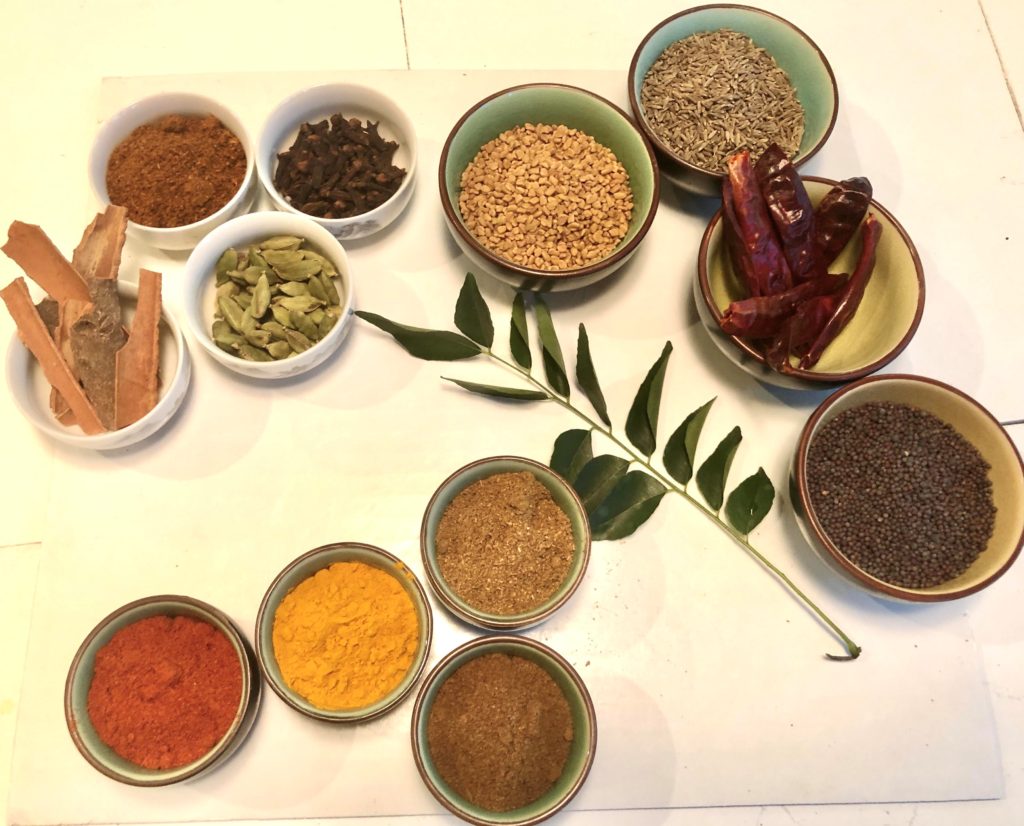
Is your kitchen pantry ready to cook global cuisines? Do you enjoy Indian food, but find it daunting to cook yourself because of the unfamiliar list of spices! Here is your answer to understand each spice to be able to cook with it and know the benefits of using them.
Recently when my daughter was moving to a new city and new home, for her job, she asked me to pack her all the essential Indian spices to cook Indian food herself and the ubiquitous element of the Indian kitchen – a masala box/spice box. This is when I made a list of all the spices she would really need to cook Indian recipes. I am sharing the list here for all those who want to cook Indian recipes, but are new or unfamiliar with the essential spices they need to have in their kitchen.
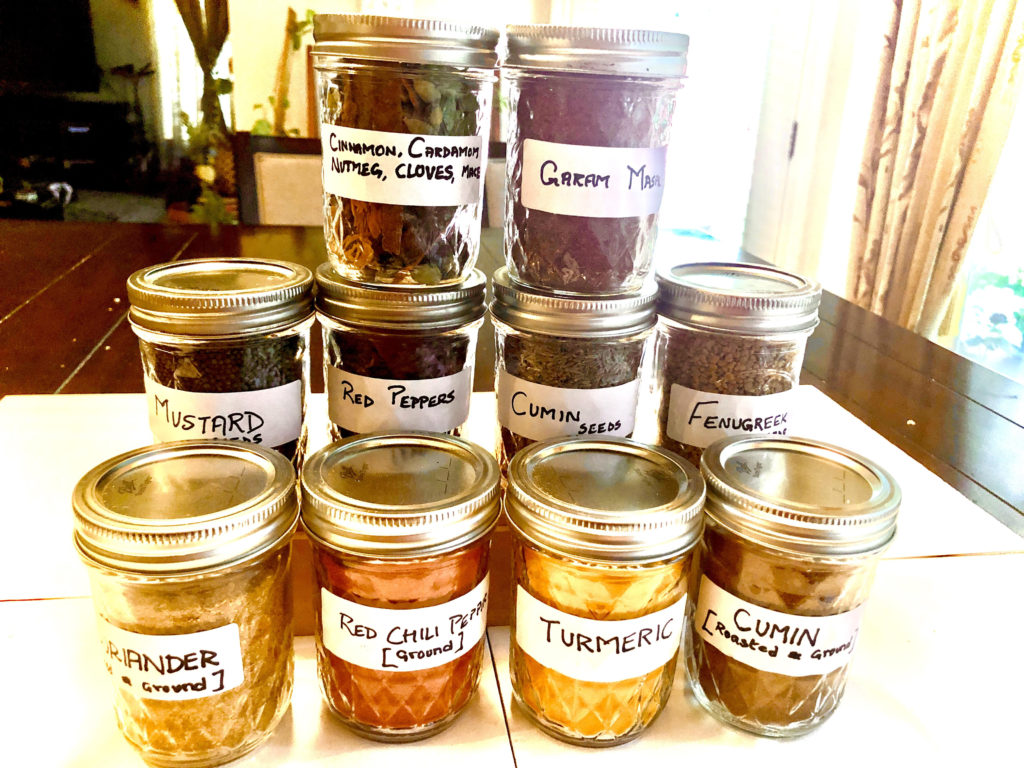
The aim is to make you a good chef with an understanding of spices, not necessarily a Mistress of Spices with mysterious ancient art of spices with special healing powers 😉 (Incidentally there is book by that name written by Chitra Banerjee Devakurni and a movie made with the same name featuring Aishwarya Rai)
The Essential Spices in most Indian recipes are: Ground Red Chilli Pepper/Lal Mirch pisihui, Dry Red Chillies/Lalmich sabit , Turmeric/Haldi, Cardamom/Elaichi, Cinnamon/Dalchini Chakla, Cloves/Laung, Garam Masala, Cumin/Zeera, Ground Cumin/Zeera pishahua, Ground Coriander/Dhanya pisahua, Fenugreek seeds/Methi dana, Mustard seeds/Rai, Curry leaves/Karyapatta.
Ground Red Chilli Pepper/ Red Chilli Pepper Powder /Ground Cayenne:

In Hindi Language: Lal Mirchi, Pisihui
Red chilli pepper powder in Indian Kitchens is the same as what westerners call Cayenne pepper. It starts with whole ripe red chili peppers, dried in shade, and milled into the red hot and spicy flavored spice.
The spiciness of ground Cayenne pepper comes from its alkaloid component called capsaicin. This alkaloid is known to have many health benefits and therapeutic cures! Capsaicin accelerates metabolism, increases blood circulation, boosts stamina, clears fats and triglycerides. It also regulates insulin levels, lowers blood pressure, alleviates inflammation, reduces arthritic pains, and releases feel good endorphins which wards of depression!
Since we love spicy food, a good dose of this spice I guess is keeping the spice in our lives 😉
Cayenne/Ground Red Pepper is the most important ingredient in Indian recipes. It is used in seasoning both vegetarian recipes and marinating and cooking meats. If not using cayenne, atleast pepper flakes or dry red chillis are added to spice a dish.
Cayenne or ground red pepper is used in numerous recipes, here is a list of recipes for example where it is an important ingredient:
Tandoori Chicken, Lamb Biryani, Gosh ka sherva/ Mutton curry, Spicy Shrimp Curry , Sautéed spicy okra, tomato chutney.
Dry Red Chilies

Hindi language : Sabit Lal Mirchi
Whole Red Chili Peppers which are dried are often used in Indian recipes for Tadka. Tadka is the seasoning added to accentuate the flavors of the dish. Of course the attributes of a whole and ground pepper are the same.
Check out the recipes where dry red chilies are an important ingredient:
Lemon Rice, Tadka dal, Poha, sevian upma
Turmeric
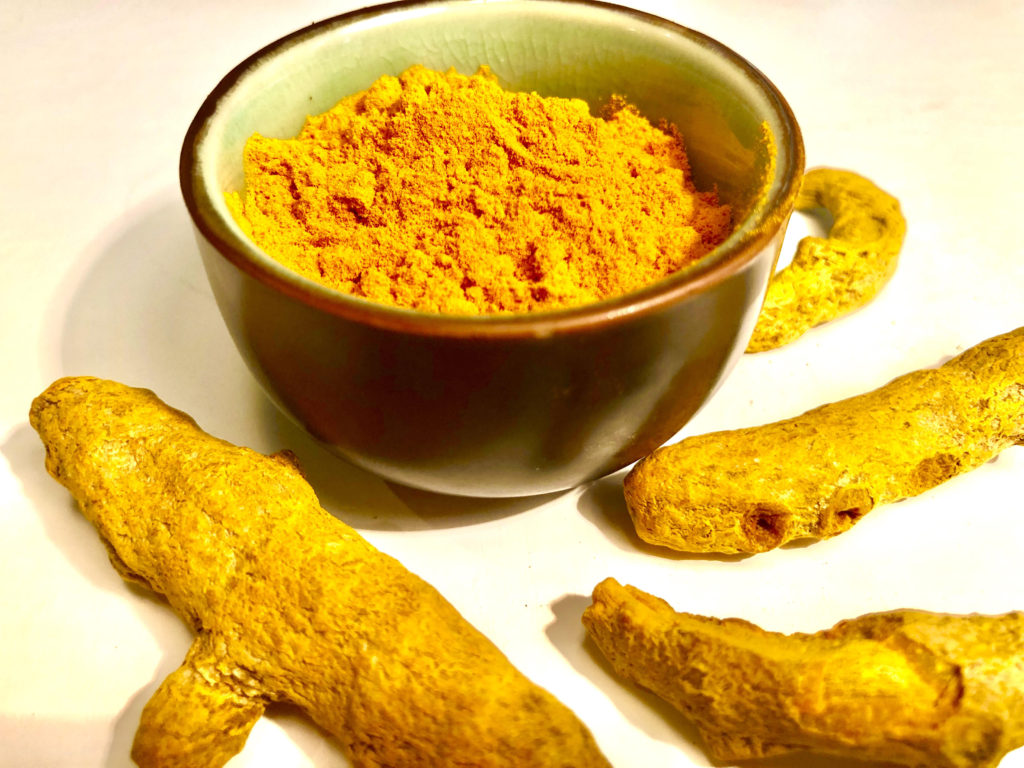
Hindi language: Haldi
Turmeric is considered nature’s wonder spice. Related to the ginger family, the dried root is ground to yellow colored powder which is used as a spice, condiment, coloring agent, medicine and beauty treatment.
Turmeric has compounds called curcumin which have many therapeutic cures. It has anti-inflammatory, antibiotic, anti-oxidant, hypoglycemic, and antiseptic properties. Turmeric helps detox, purify and stimulate blood; it lowers blood sugars, is carminative and stomachic. If high protein food is part of your diet, turmeric can aid in digestion of the protein. Turmeric is also widely known for its decongestant and expectorant properties, hence turmeric golden milk, is recommended for curing coughs, colds and allergies. A strong proponent and believer in turmeric, turmeric milks and turmeric ginger teas are our regular go-to’s to stay healthy.
Turmeric can be added in moderation to any recipe during cooking to gain from its healing benefits. Turmeric can be added to many recipes, here are a few to understand its usage. Tadka dal, khichdi, lemon rice, kheema, biryani, tandoori chicken, biryani, tandoori chicken.
Cardamom
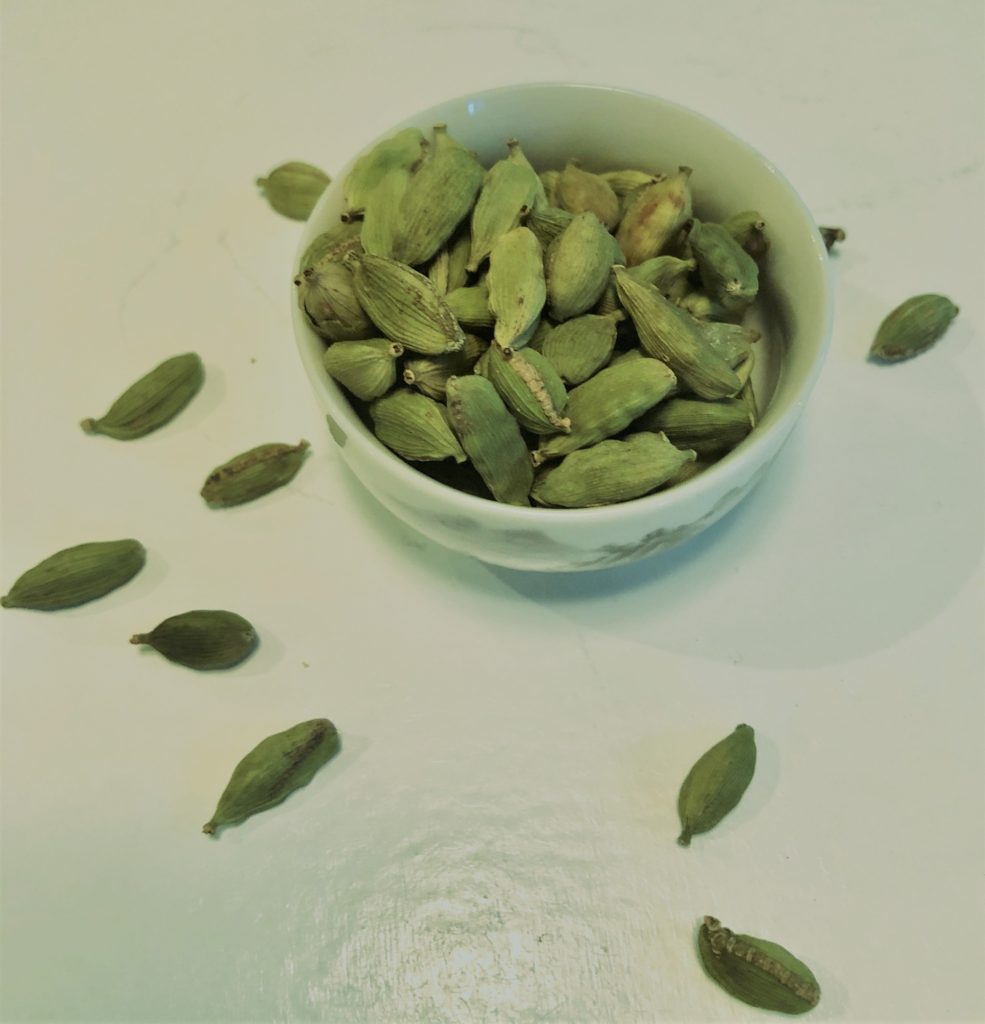
Hindi language: Elaichi
Cardamom is sweet and aromatic and used in flavoring desserts, rice, meat recipes, chai/tea and detoxifying coffees. It’s also an important spice in the making of garam masala. The harvested pods of the plant are washed and dried and the seeds inside the pods are the spice.
Cardamom is known for its stimulant, expectorant, digestive, diaphoretic, mouth freshening, and aphrodisiac properties. It can bring a calming energy, aid respiratory problems, and help in indigestion issues.
Used in Desserts like Kheer. Chai, Sheer qoorma
Hindi : Elaichi
Cinnamon & Cassia:
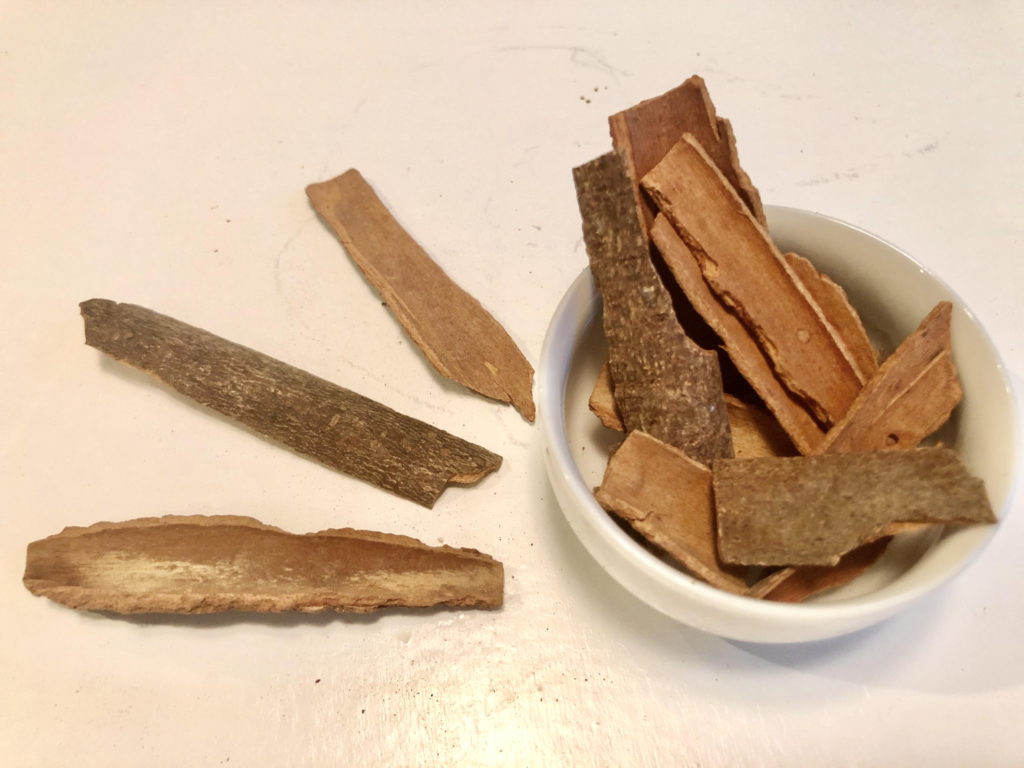
Hindi language: Dalchini Chakla
Cinnamon and Cassia often used interchangeably are confused as the same because of its similar flavors, and belonging to same cinnamomum species. The biggest difference between cinnamon and cassia bark is the cinnamon bark is thin and rolls up into telescopic quills and is a much stronger spice, while the barks of cassia trees are thicker and flatter.
This sweet, aromatic spice has a lot of utilitarian benefits besides flavor. Cinnamon is said to contain some antibacterial, antifungal, antioxidant, anti-inflamatory, and astringent properties. Cinnamon is known to perk you up, give energy and improve circulation. Lowers blood sugars, triglycerides and cholesterol. And helps in colds, congestion and allergies. A spoon of honey with good dash of cinnamon has been good for colds and sore throat.
Cinnamon is used in desserts, cakes, puddings; in beverages such as eggnog, hot chocolate, mulled wine, coffee, and tea to add extra zing. Cinnamon and cassia sticks are one of the ground ingredients of Garam Masala which flavors meats, curries and stews.
Used in desserts like double ka halwa, Squash halwa, Lamb Biryani
Cloves:
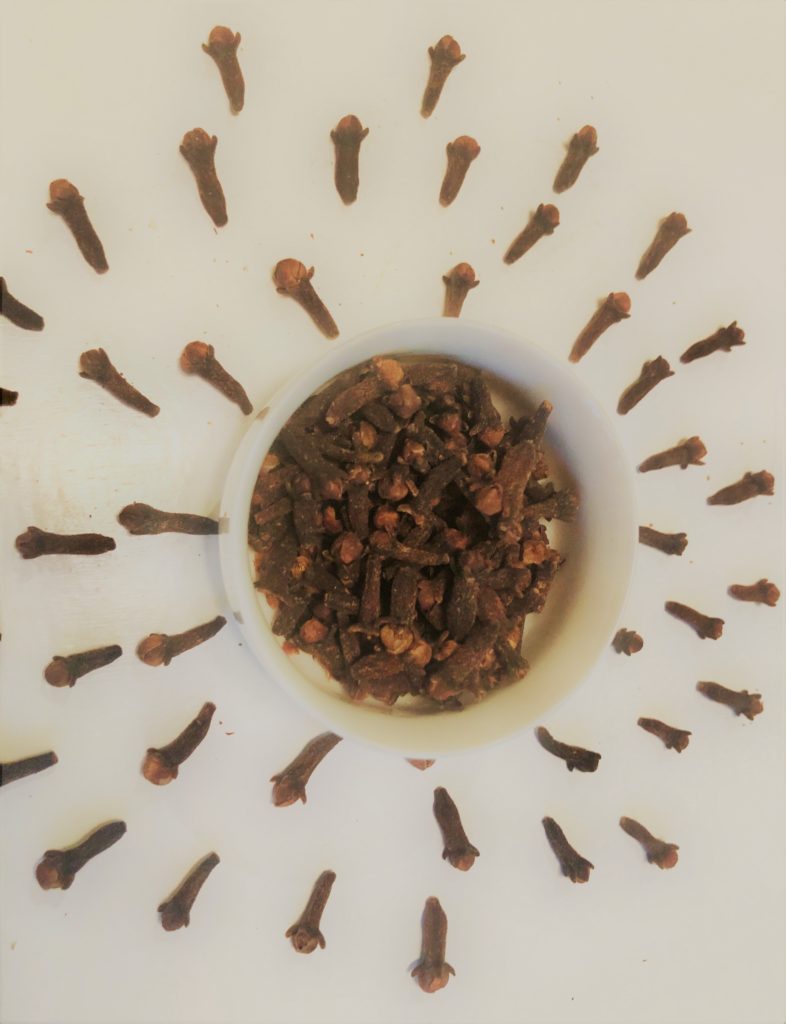
Hindi language: Laung
Cloves are aromatic, pungent and have heating properties. Used to spice curries, meat marinades, chili, stews and more it’s another important spice of the garam masala mix. Cloves are also used to flavor drinks like Masala chai tea, apple cider, liqueurs, betel/Pan, breath fresheners, toothpaste and clove flavored cigarettes/Kretek! Not to forget it’s used as deodorizer in incense, air fresheners, and potpourris.
Cloves have been known to have many natural remedies. It functions as an analgesic, expectorant, stimulant, carminative, antifungal, antiseptic, anti inflammatory, anti oxidant and anesthetic. I have often used cloves to stop nausea and vomiting in pregnancy and motion sickness. It also works to control incessant coughing and the clove oil works as anesthetic in tooth aches.
Used in Lamb Biryani , Tadka dal
Garamamasala:
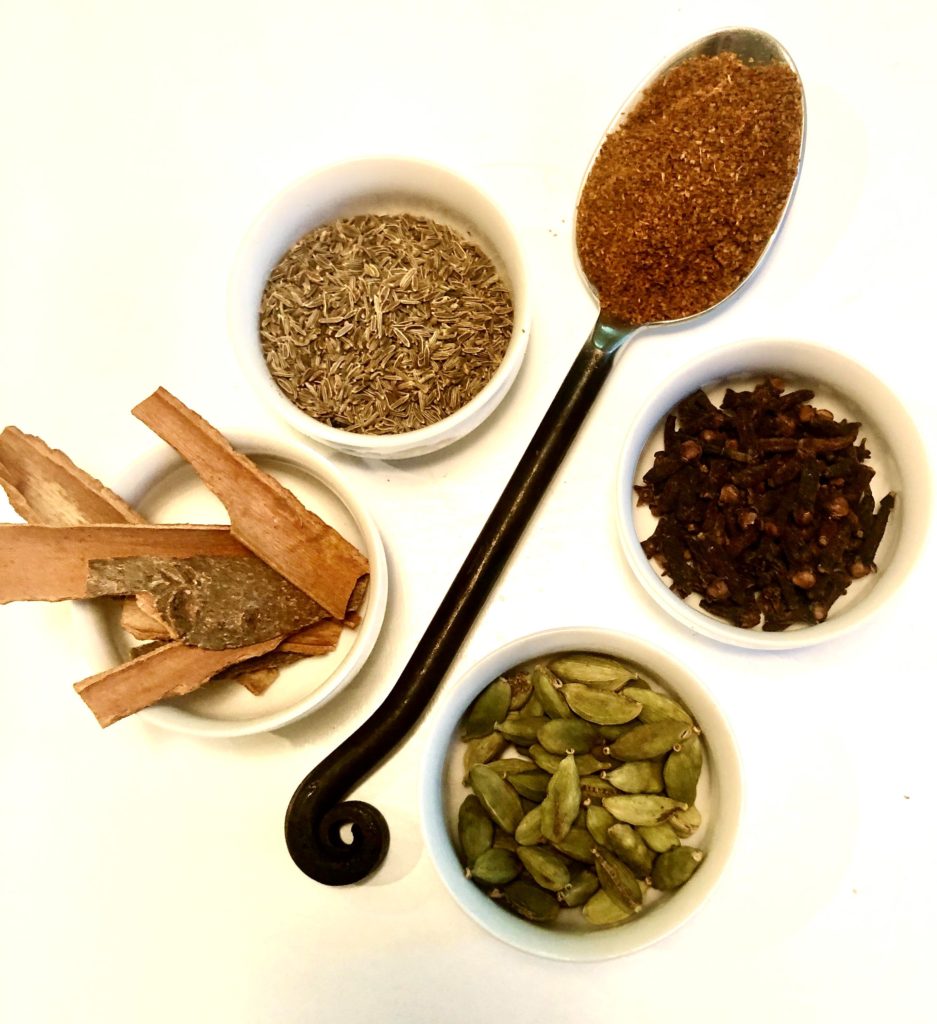
This is the spice mix combination of many spices used to flavor curries and marinate meats and add heat to the recipes. In India, there are many regional cuisines and different culinary methods use some form of garam masala or other but the combinations of spices differ from region to region. The Garam masala combination I use and the most popular of the spice combination is the mix of cardamom, cinnamon, cloves and royal cumin( shahzeera) or caraway seeds.
Garam masala is used in marinating meats –Tandoori chicken, Biryani
Cumin:
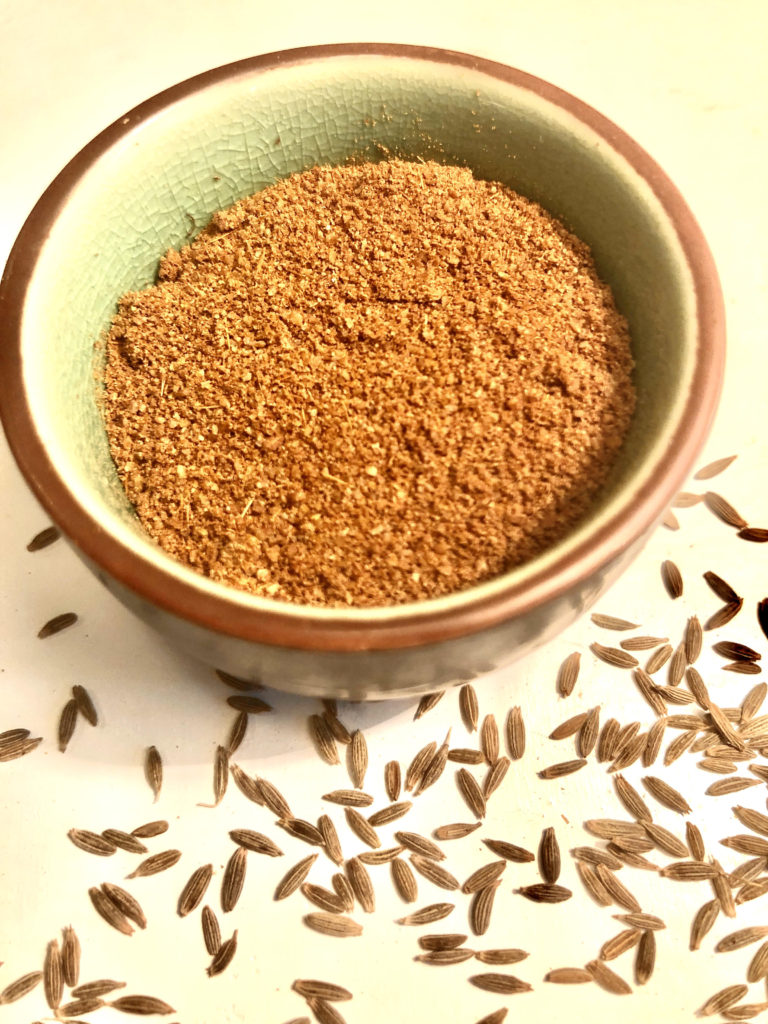
Cumin /Zeera Powder 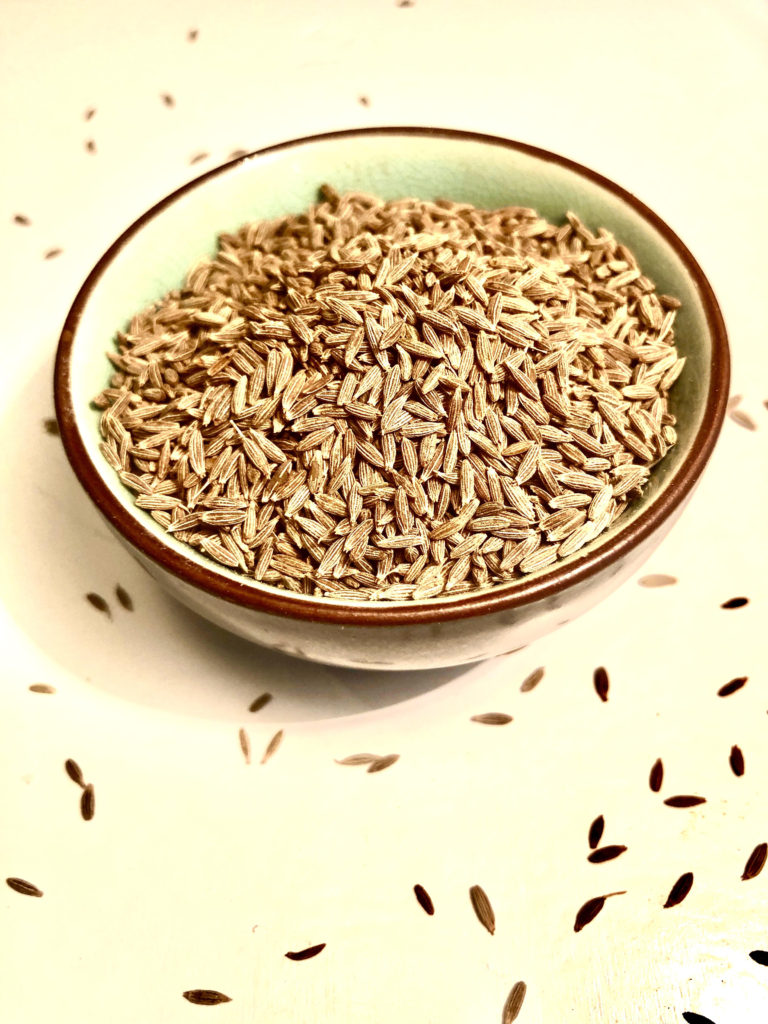
Cumin/ Zeera
Cumin seeds are brown, aromatic, smoky flavored seeds which are used both as seeds and as a spice. The cumin spice is made after roasting and grinding the seeds. There are recipes where either the seeds or the spice or both are used.
Cumin is known for its digestive, carminative, and anti-spasmodic properties. It helps in breast milk production, as immunity builder, blood cleanser and reduces body fatigue.
Cumin seeds are used in few recipes to flavor the dish or as part of tadka. The ground cumin spices up many curries and stews.
Coriander ground
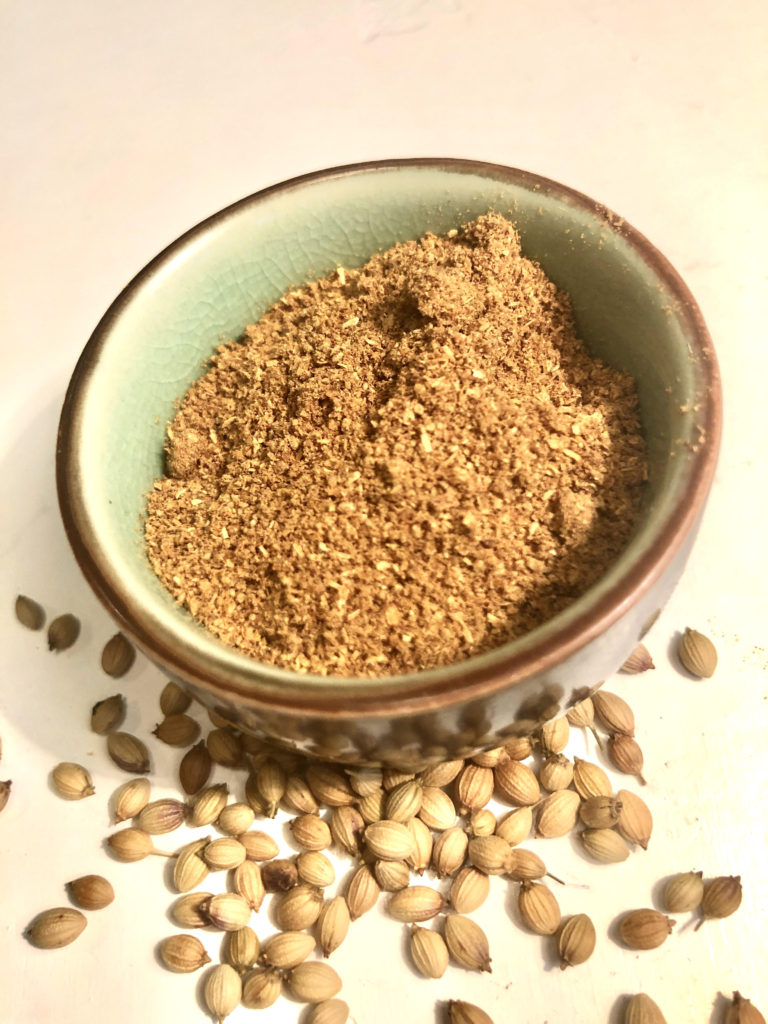
Hindi language : Dhanya
Coriander seeds are the made when the coriander plant also called cilantro, grows flowers and forms seeds. These seeds when dry are plucked and roasted and ground to form the coriander spice.
Though the seeds and even sometimes cilantro has a soapy smell to it, when roasted and ground it has a smoky aroma to the spice.
Corriander is known to help in healing digestive issues, urinary infections and migraines.
While cilantro is used heavily for garnishing many recipes. Coriander ground spice is used to flavor meats and vegetables and lentil soups like dal and sambar. check in recipes : Egg Curry, Ridge gourd mutton curry
Fenugreek seeds:
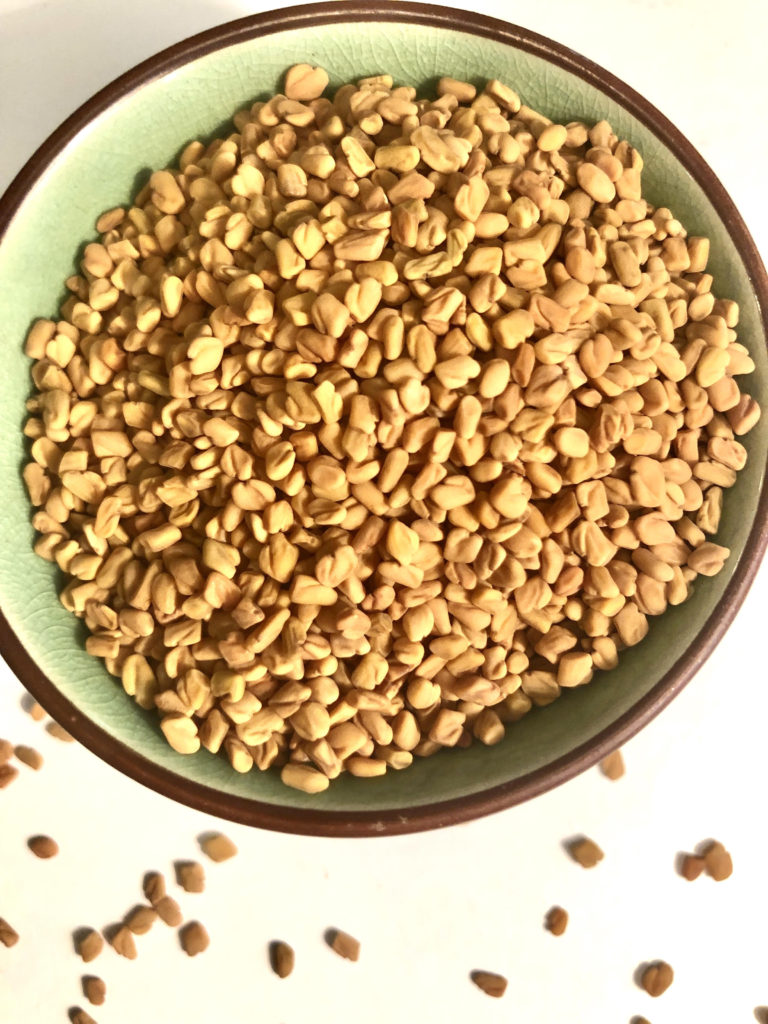
Hindi: Methi
Fenugreek are yellow square shaped seeds with pungent aroma and bitter taste. The seeds are used in tadka or seasoning few recipes and sometimes its ground and added to few more recipes to add an umami flavor. The seeds when planted in soil grows clover shaped herbs which are also used in cooking.
Fenugreek is known to have a lot of therapeutic cures. It is known to aid in reducing blood sugar levels and inflammations, aid digestion, promote lactation, and regularize mensuration. It’s also a warming expectorant and antiseptic.
Check use in recipes: Egg curry, Mirchi Ka salan
Mustard Seeds:
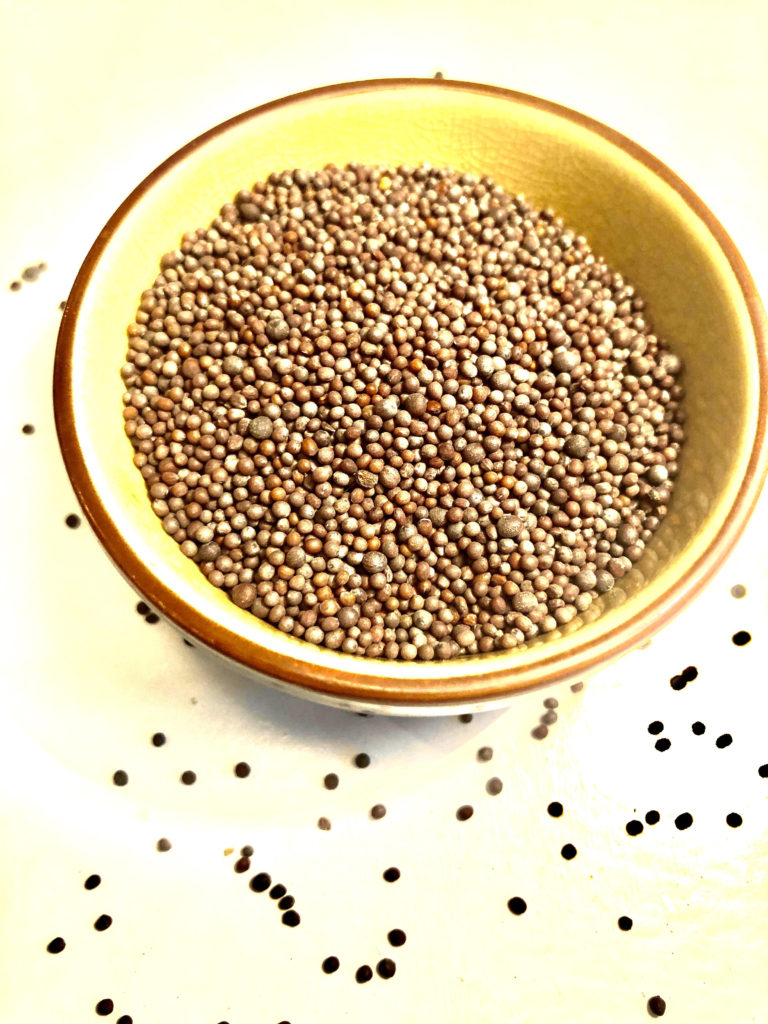
Hindi Language: Rayan/Rai
Mustards seeds are important part of the tadka or seasoning added to warm oil. The crackling of the mustard seeds releases flavors into the oil and the recipe. The mustards seeds are powdered and used in pickling process too called Achaar.
The mustard seeds have warming, carminative, antiseptic, antibacterial and anti-viral properties.
Reipes used in : Tadka Dal , Puffed rice Snack
Curry Leaves:/Karyapatta.
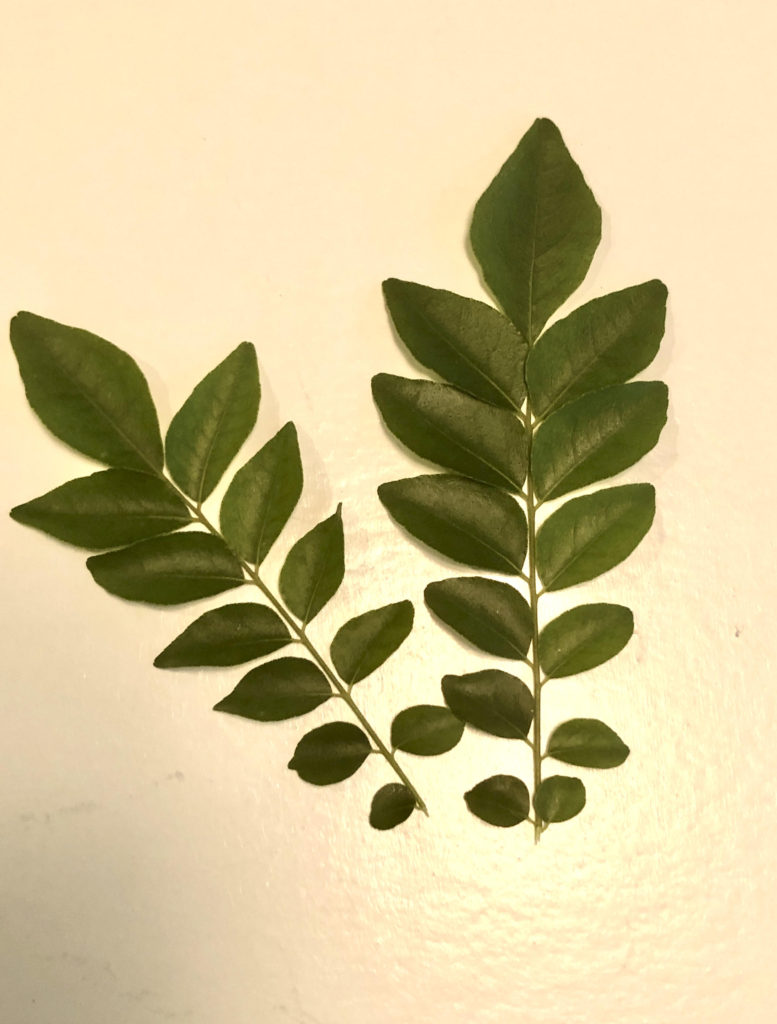
Hindi Language: Karyapatta/ Karyapak
Karyapak is used in tadka or seasoning in many recipes. The powdered curry leaves are sometimes used in some recipes too. Curry leaves also have therapeutic benefits with its ability to lower blood sugars, cholesterol, and triglycerides. It also has anti-inflammatory, anti-bacterial, oxidative and neuroprotective properties.
Usage: pulihora, tadka dal, bhindi fry
Masala Spice Box:
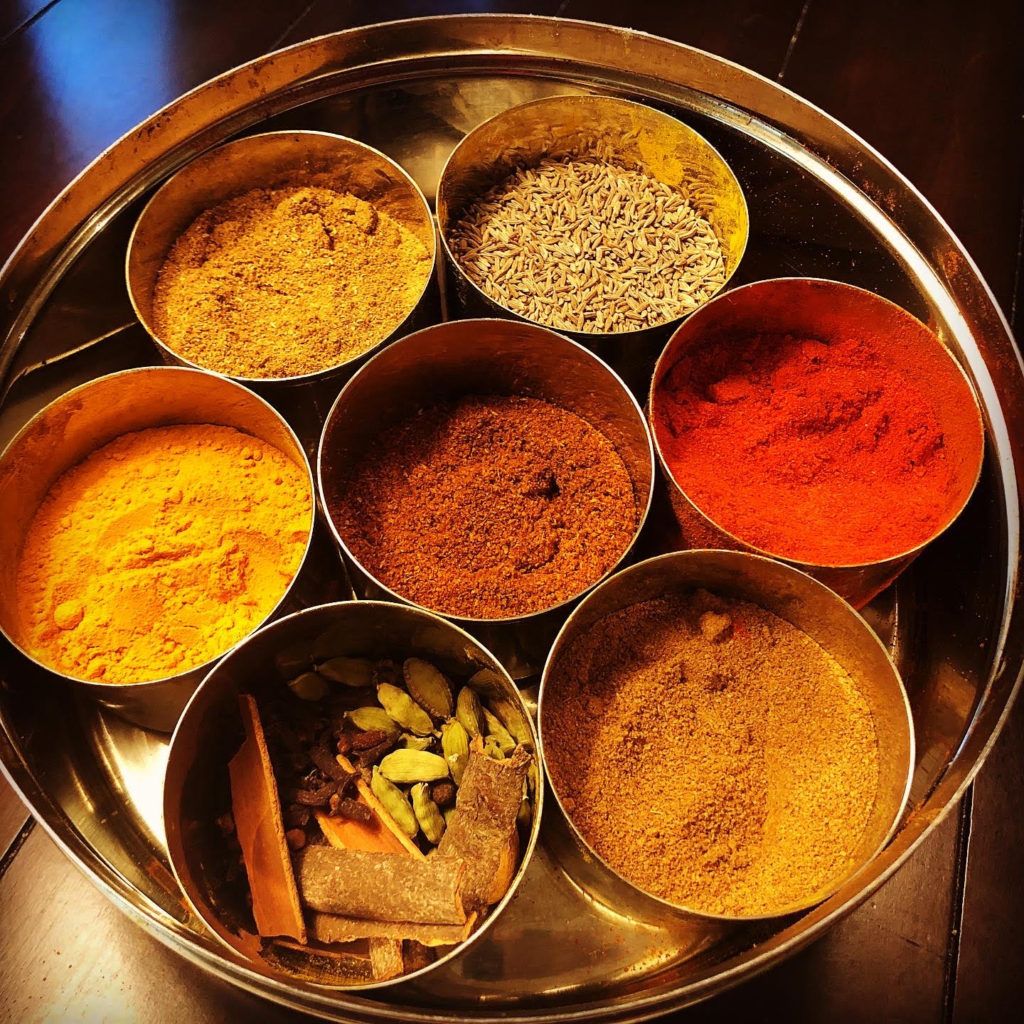
It’s a spice storage container containing the essential spices in small quantities kept in the nearest drawer to the stove to make cooking convenient. You may also call it the quintessential reflection of a kitchen which cooks Indian cuisines! Otherwise spices have to be stored in air tight containers in the pantry to not loose its flavoring strength and efficacy.
Other Indian spices used in Indian recipes but not necessarily the most essential: Asafoetida/Hing, Saffron/Zafran, Fennel/Saunf, Mace/Javitri, Nutmeg/Japhal, Star Anise/chakra phool, Caraway/Shahzeera, Black pepper/Kalimirch, Fenugreek Leaves/Kasuri methi , Carum seeds/Ajwain, Dry Mango powder/Aamchur, Nigella sativa/Kalongi, Allspice/Kababchini, Bay leaf/Tej patta
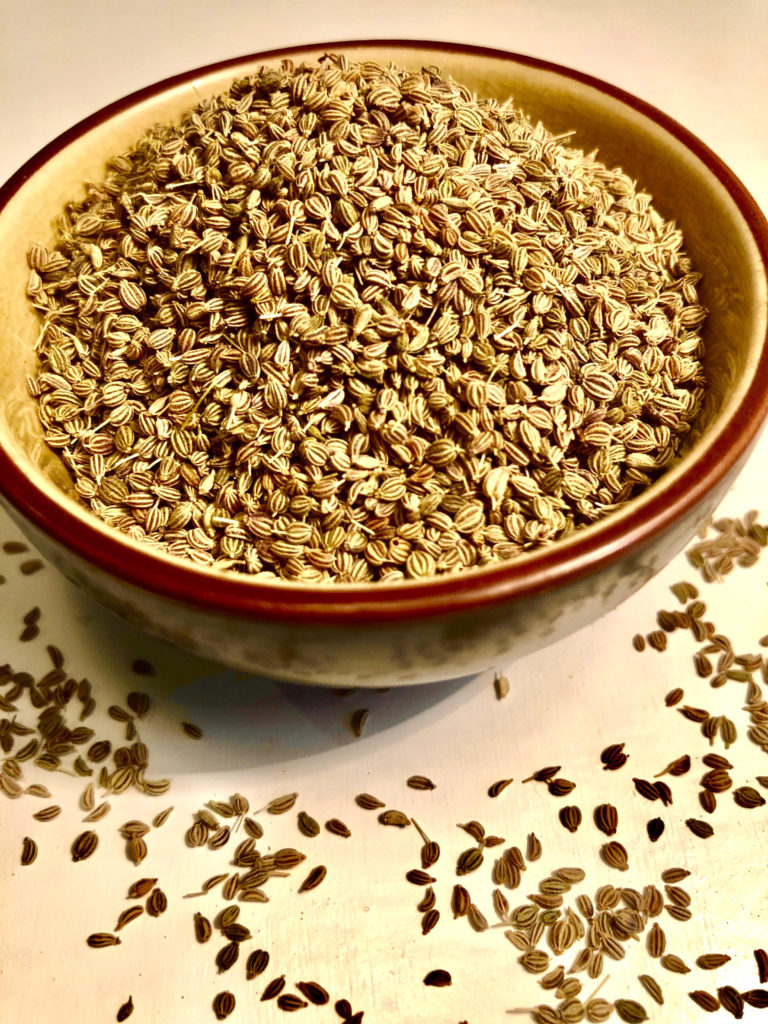
Carum/Ajwain 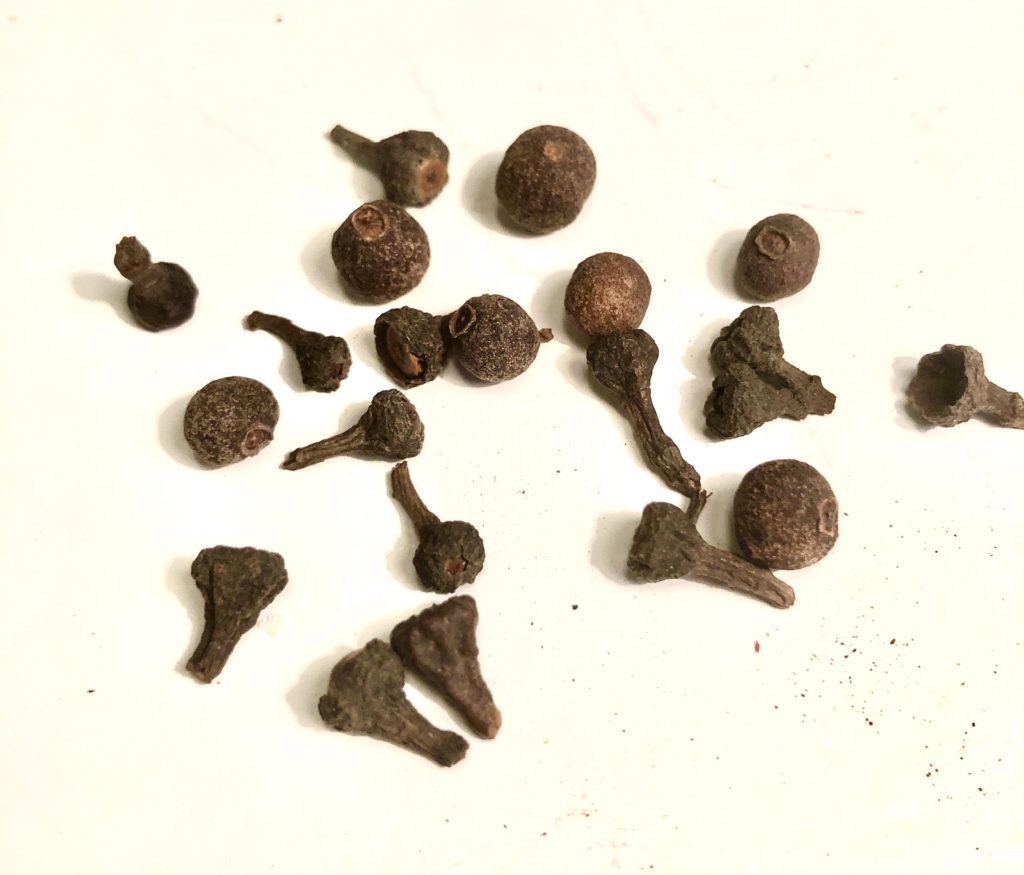
Allspice/Kababchini 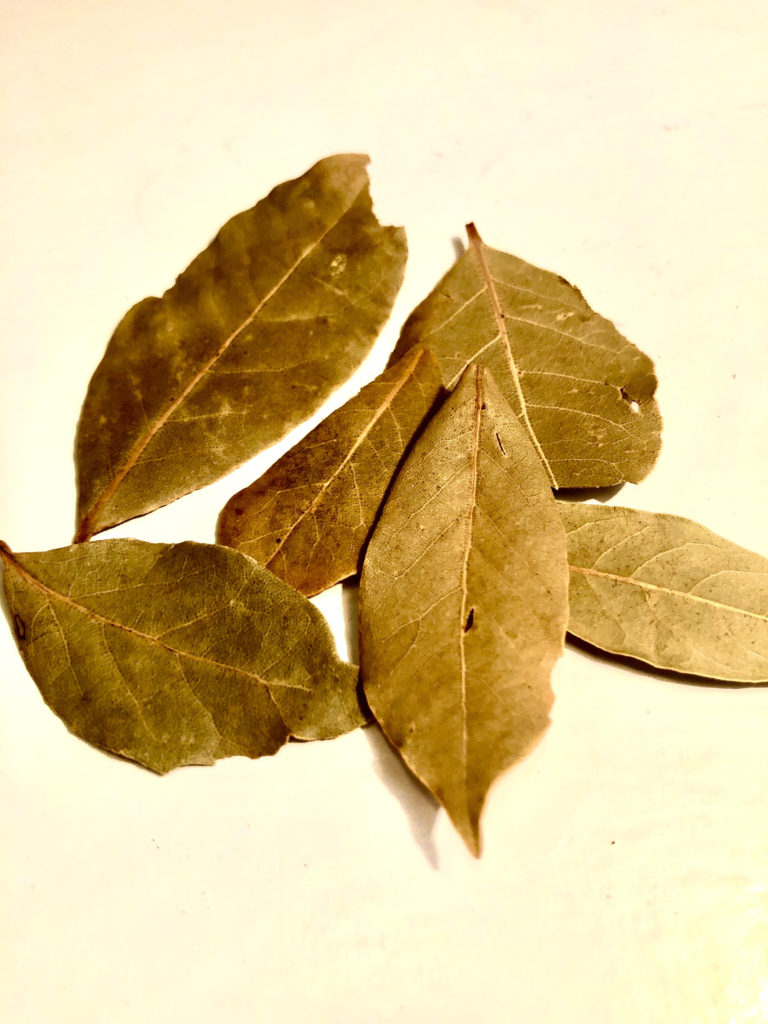
Bay Leaf/Tej patta 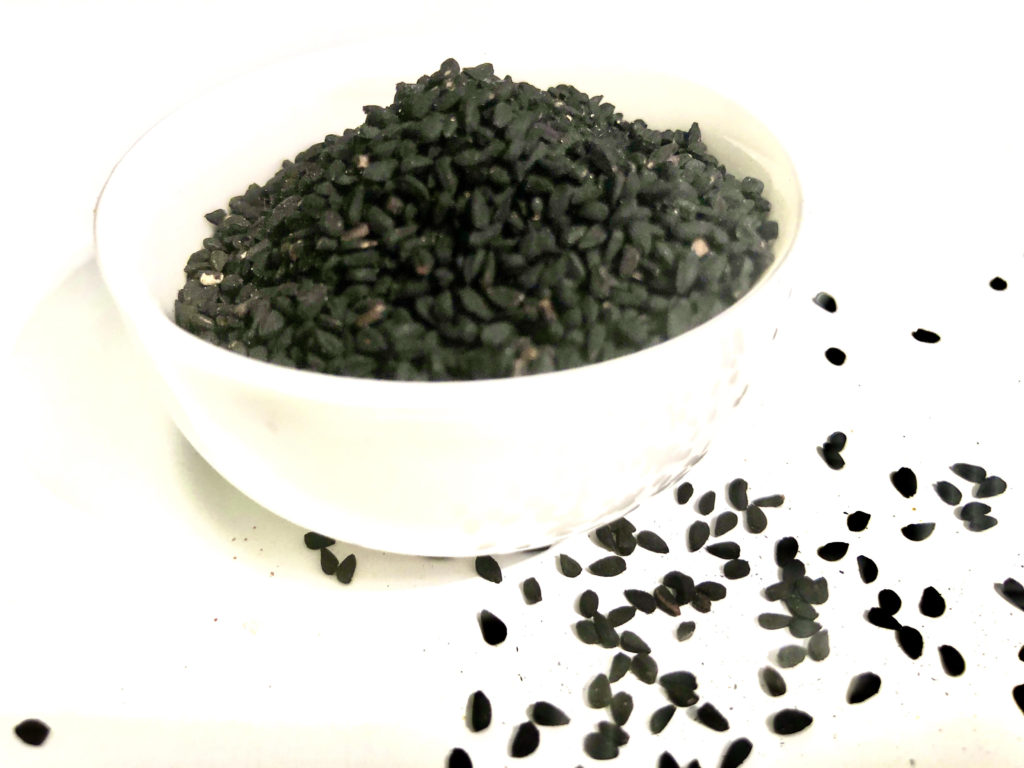
Nigella/Kalonji 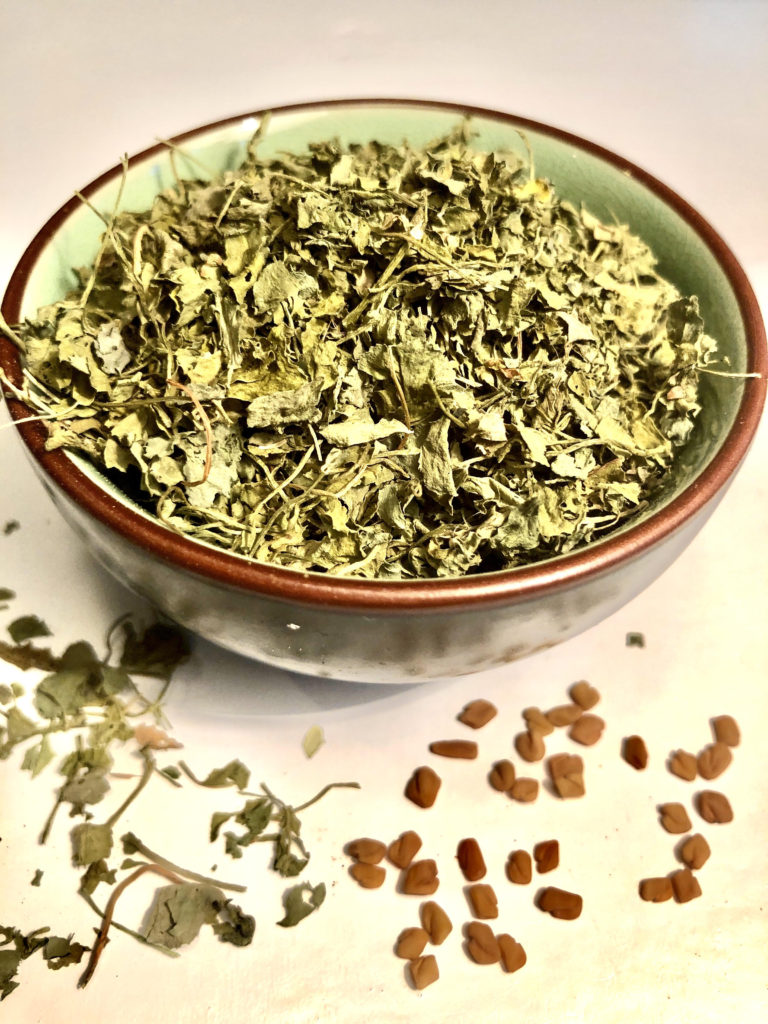
Dry Fenugreek Leaves/Kasuri Methi 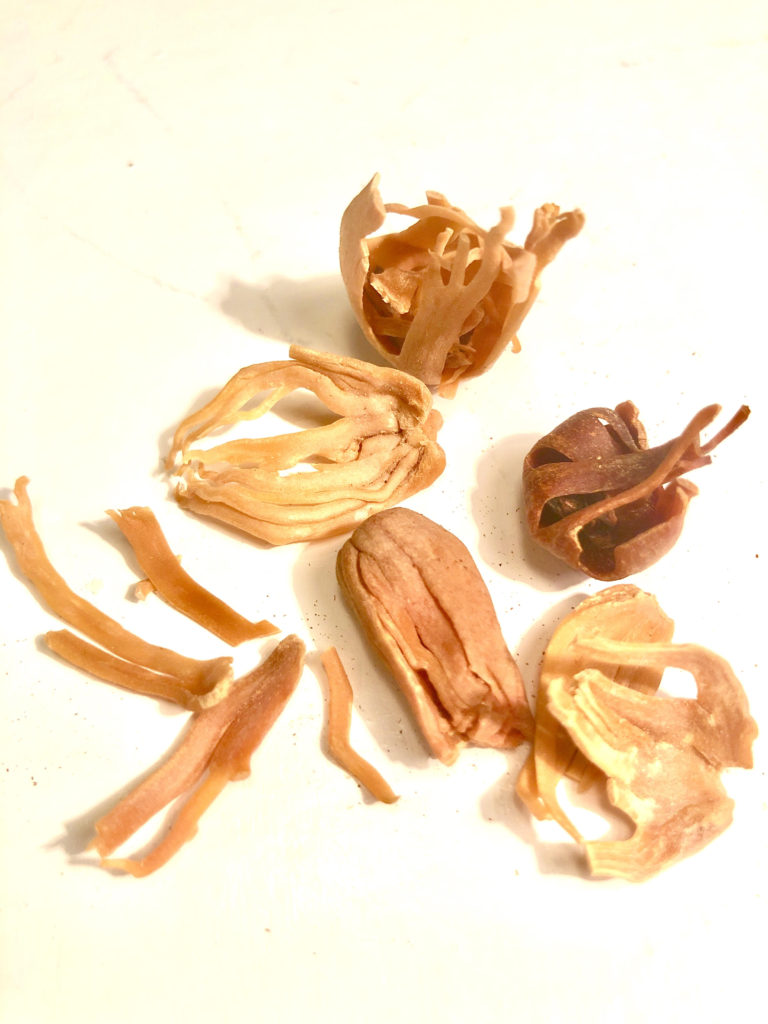
Mace/Javithri 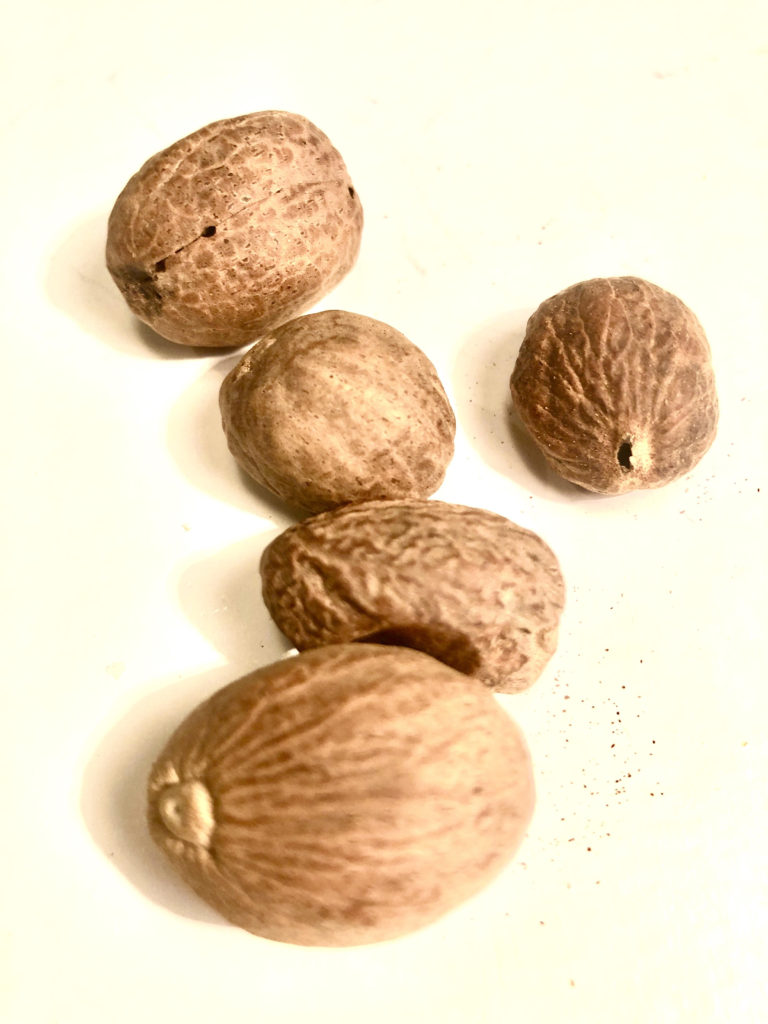
Nutmeg/ Japhal 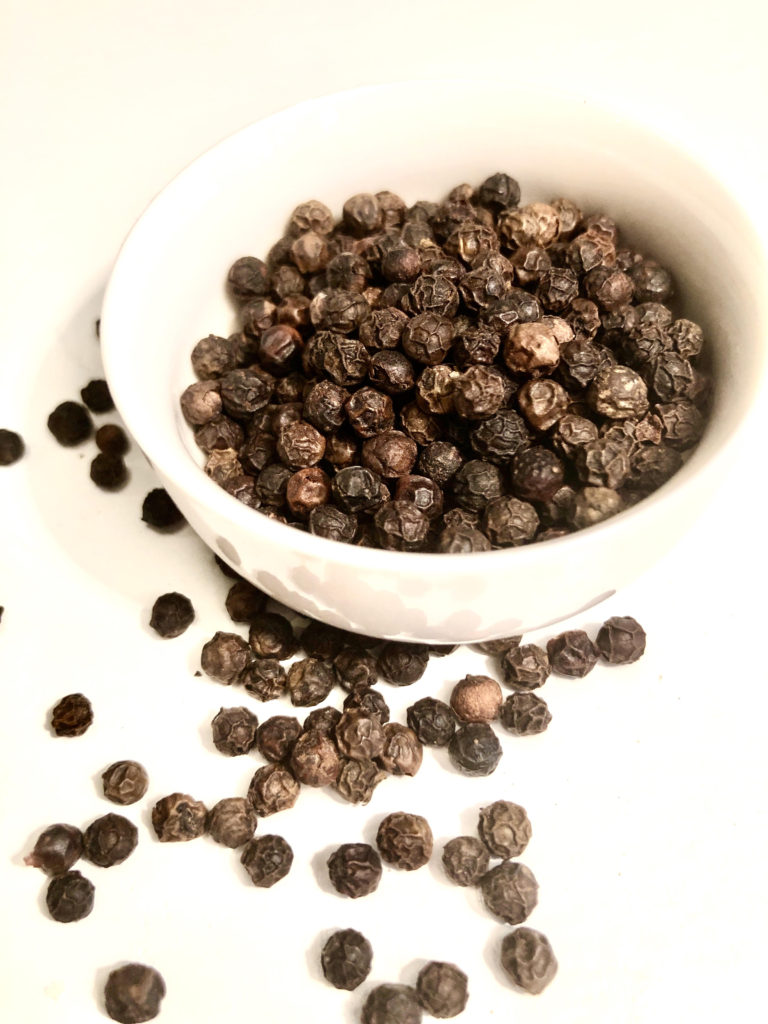
Black Pepper/Kalimirchi 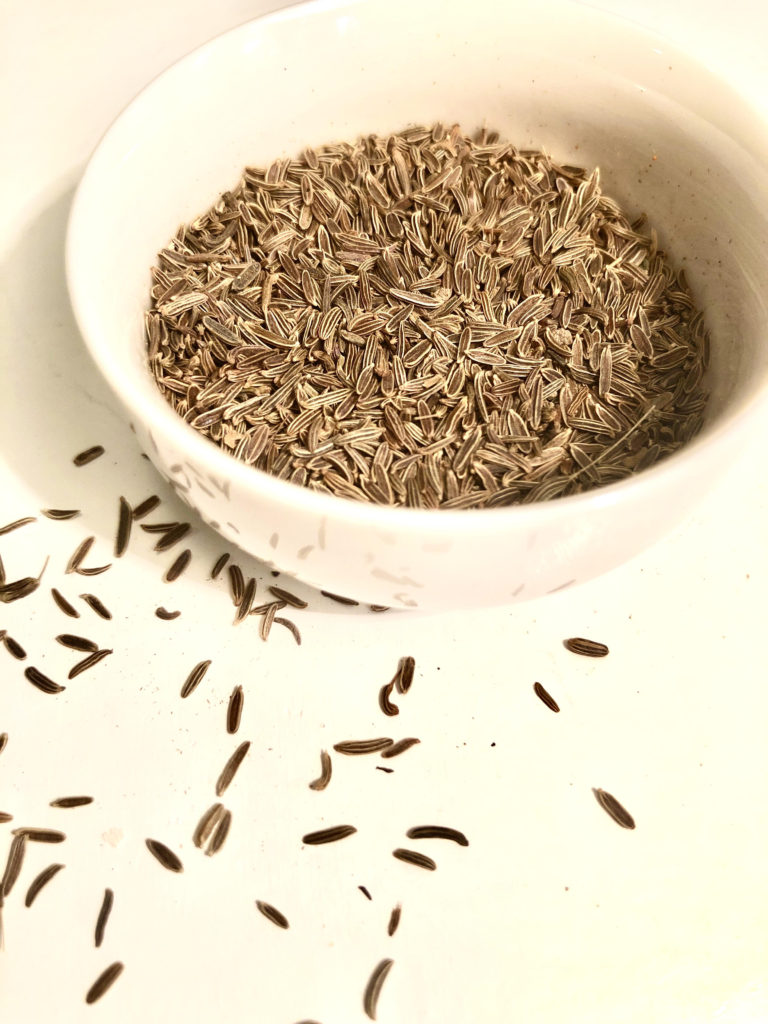
Caraway/Shah Zeera 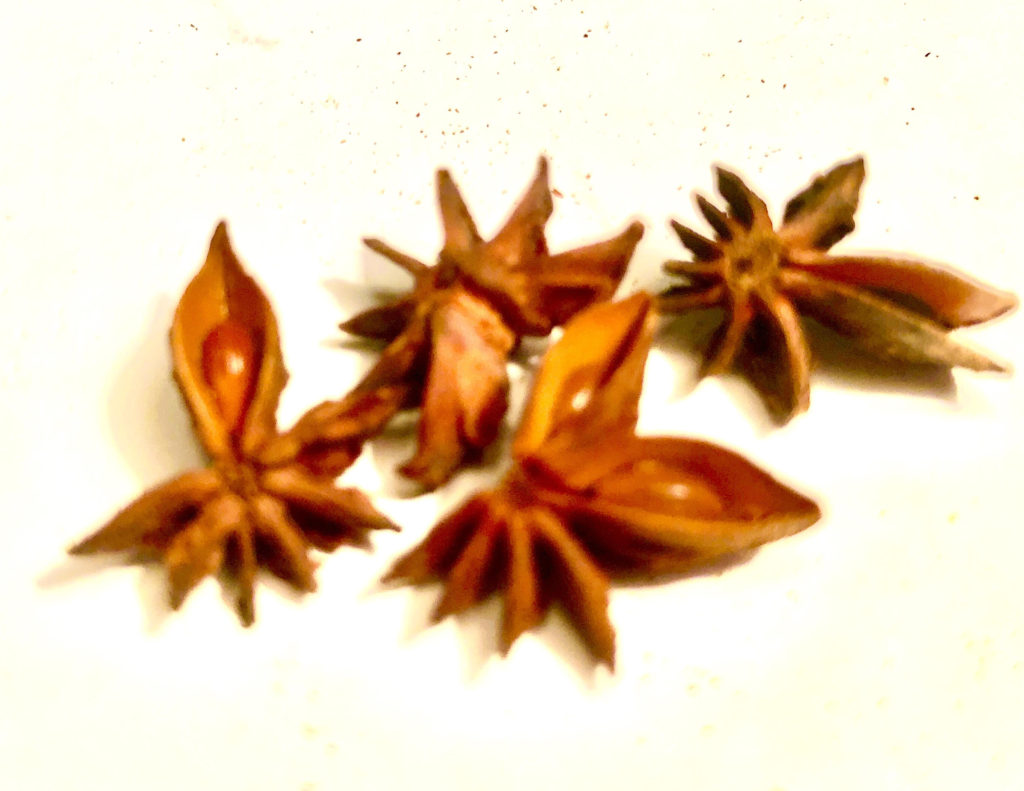
Star Anise/ ChakraPhool 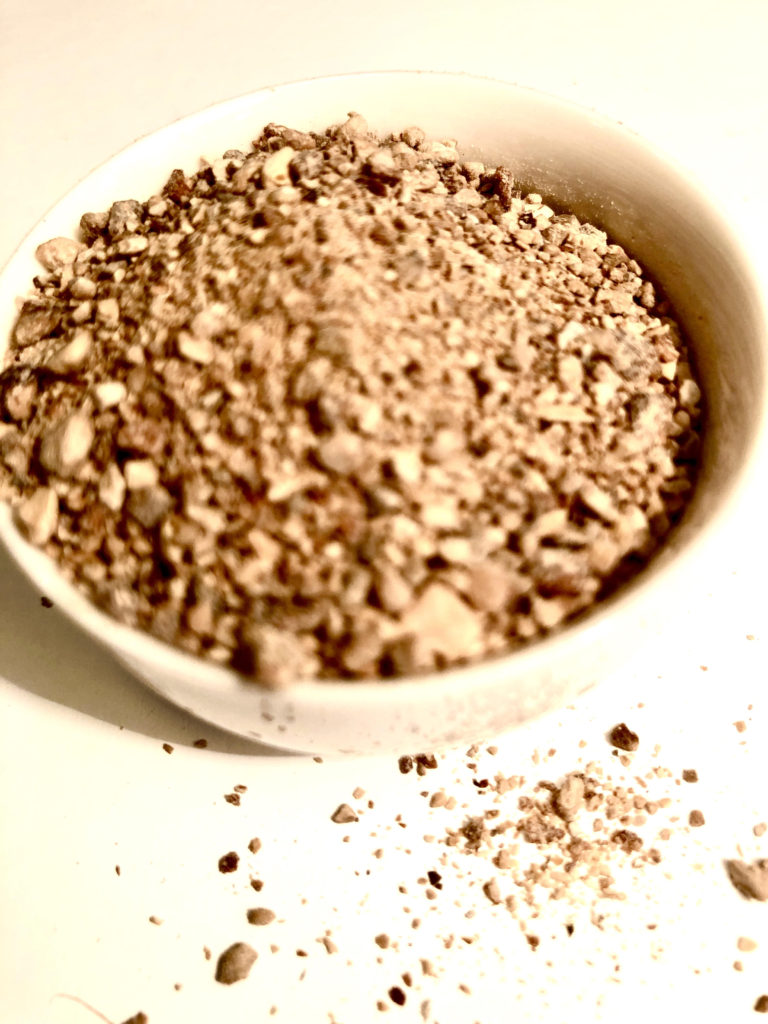
Dry Mango Powder/Aamchur 
Asafoetida/Hing



